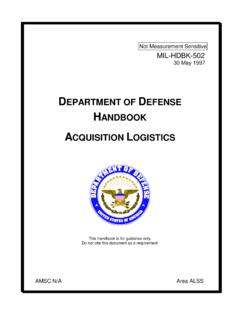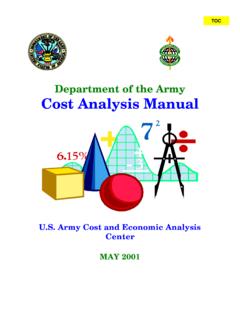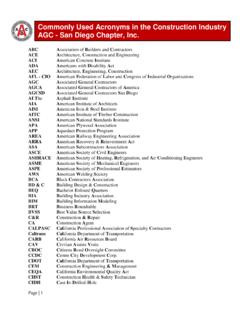Transcription of Basic Tax Issues in Acquisition Transactions
1 879 Basic Tax Issues in Acquisition Transactions Michael L. Schler1 Table of Contents I. INTRODUCTION .. 880 II. TAXABLE OR TAX-FREE TRANSACTION? .. 882 A. Is a Tax-Free Reorganization Possible? .. 882 B. Is a Tax-Free Reorganization Desirable? .. 883 III. TAXABLE Transactions .. 886 A. Transaction Treated as Stock Acquisition for Tax Purposes .. 887 B. Transaction Treated as Asset Acquisition for Tax Purposes .. 887 C. Comparison of Taxable Stock and Asset Acquisition .. 888 1. Target a Stand-Alone C Corporation .. 888 2. Target an S Corporation .. 889 3. Target an 80% Subsidiary.
2 890 D. Forms of Taxable Stock Purchase for Tax Purposes .. 891 1. Straight Purchase of All Stock .. 891 2. Reverse Merger .. 892 3. Stock Purchase Followed by Merger .. 892 E. Forms of Taxable Asset Purchase for Tax Purposes .. 893 1. Straight Purchase of All Assets .. 893 2. Forward Merger .. 893 3. Dropdown of Assets to LLC and Sale of LLC Interests .. 894 4. Conversion of Target Into LLC, Then Sale of LLC Interests .. 894 5. New Holding Company Followed by Sale of LLC Interests .. 894 6. Section 338(h)(10) Election .. 895 F. Allocation of Purchase Price .. 896 G.
3 Contingent Purchase Price .. 898 H. State and Local Tax Considerations .. 898 IV. TAX-FREE REORGANIZATIONS .. 899 A. General Requirements for Reorganizations .. 899 1. Continuity of Interest .. 899 1. Partner, Cravath, Swaine & Moore LLP, New York City. The views in this article are solely those of the author. This article is not intended as tax advice in connection with any particular transaction or set of facts. 880 PENN STATE LAW REVIEW [Vol. 116:3 2. Continuity of Business Enterprise .. 900 3. Business Purpose .. 900 4. Subsequent Transfers of Assets.]
4 901 B. Reorganizations Where Target Stays Alive .. 901 1. (a)(2)(E) 901 2. B Reorganization .. 902 3. Structuring Issues .. 902 C. Reorganizations Where Target Goes out of Existence .. 903 1. A Reorganizations .. 903 2. (a)(2)(D) 903 3. C Reorganizations .. 904 4. Structuring Issues .. 904 D. The Double Dummy Structure .. 906 E. Foreign Transactions .. 907 V. OTHER Issues ARISING IN ALL Transactions .. 908 A. Net Operating Losses .. 908 B. Prior Spin-offs .. 909 VI. CONCLUSIONS .. 911 I. INTRODUCTION This article discusses Basic tax Issues that arise in an Acquisition transaction.
5 It is intended primarily for readers who are corporate lawyers rather than tax lawyers. The discussion is written in general terms and does not include every exception to the general rules (and exception to exception, and so on). Most importantly, it is vital for the corporate lawyer to consult a tax lawyer at every stage of an Acquisition transaction. The tax rules are detailed, often counterintuitive, and always changing. Details that are minor from a corporate point of view, such as which corporation survives a merger, can have vast consequences from a tax point of view.
6 The particular structure of a transaction can mean that one party might achieve a significant tax benefit at the expense of the other party ( , your client), or even worse, both parties could end up significantly worse off than if a different corporate structure had been used. In addition, it is not enough merely to rely on the Internal Revenue Code and regulations, because there is a large body of Internal Revenue Service ( IRS ) rulings, judicial decisions, and nonstatutory doctrines. It is also essential that the tax lawyer begin to participate in a transaction at the very beginning.
7 This is usually when the Basic structural elements of the transaction are determined. It is much easier to propose a particular structure at the time an initial term sheet is being negotiated than it is to propose a change in structure after both sides (with or without their respective tax lawyers) have agreed to it. 2012] Basic TAX Issues IN Acquisition Transactions 881 Likewise, detailed ongoing participation by the tax lawyer is necessary to be sure that changes in documentation do not change the tax results that are important to the client.
8 Part II of this article discusses the considerations involved in deciding whether a transaction should be a taxable transaction or a so-called tax-free reorganization. Part III discusses taxable Transactions , including the different tax effects of stock and asset acquisitions and the different structures for achieving either of these tax results. Part IV discusses the requirements for a tax-free reorganization and the structures that can be used in a reorganization. Part V discusses other Issues that arise in both taxable and tax-free Transactions .
9 Part VI provides conclusions. This article assumes throughout that one corporation ( Acquiring ) intends to acquire the business of another corporation ( Target ). The shareholders of Target are referred to as the Shareholders. Unless otherwise indicated: Target and Acquiring are both taxable C corporations, , they are taxable on their own This is in contrast to an S corporation, which is a closely held corporation that meets various conditions,3 that does not pay income tax itself,4 and whose income is taxed directly to its Acquiring and Target are unrelated before the transaction.
10 They have primarily different shareholders, and Acquiring does not own any preexisting stock in Target. The Shareholders hold their stock for investment, and are not dealers or in other special tax situations. Acquiring will acquire all the business of Target, , there are no retained assets that will go to the Shareholders. References to tax are to federal income tax. 2. See 11. All references to are to the as in effect on January 1, 2012. 3. Id. 1361. 4. See id. 1363. 5. See id. 1366. 882 PENN STATE LAW REVIEW [Vol. 116:3 II.]








